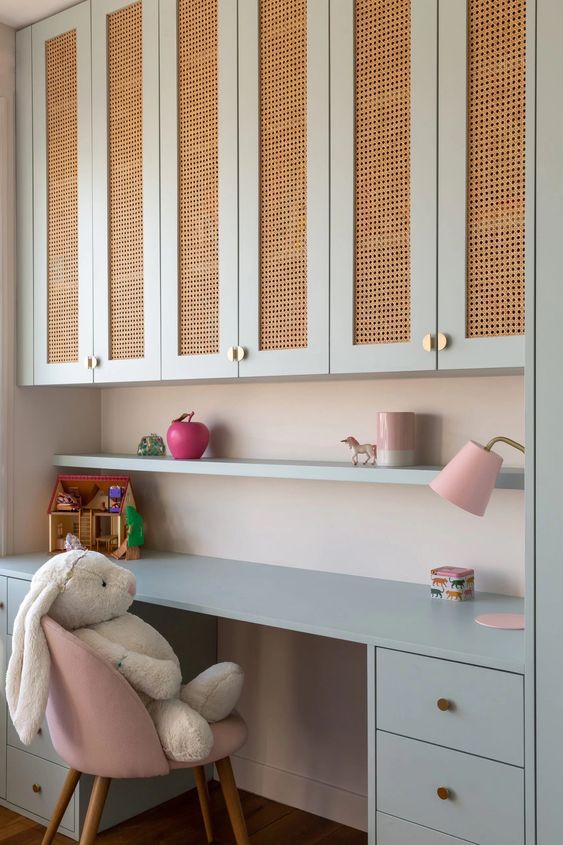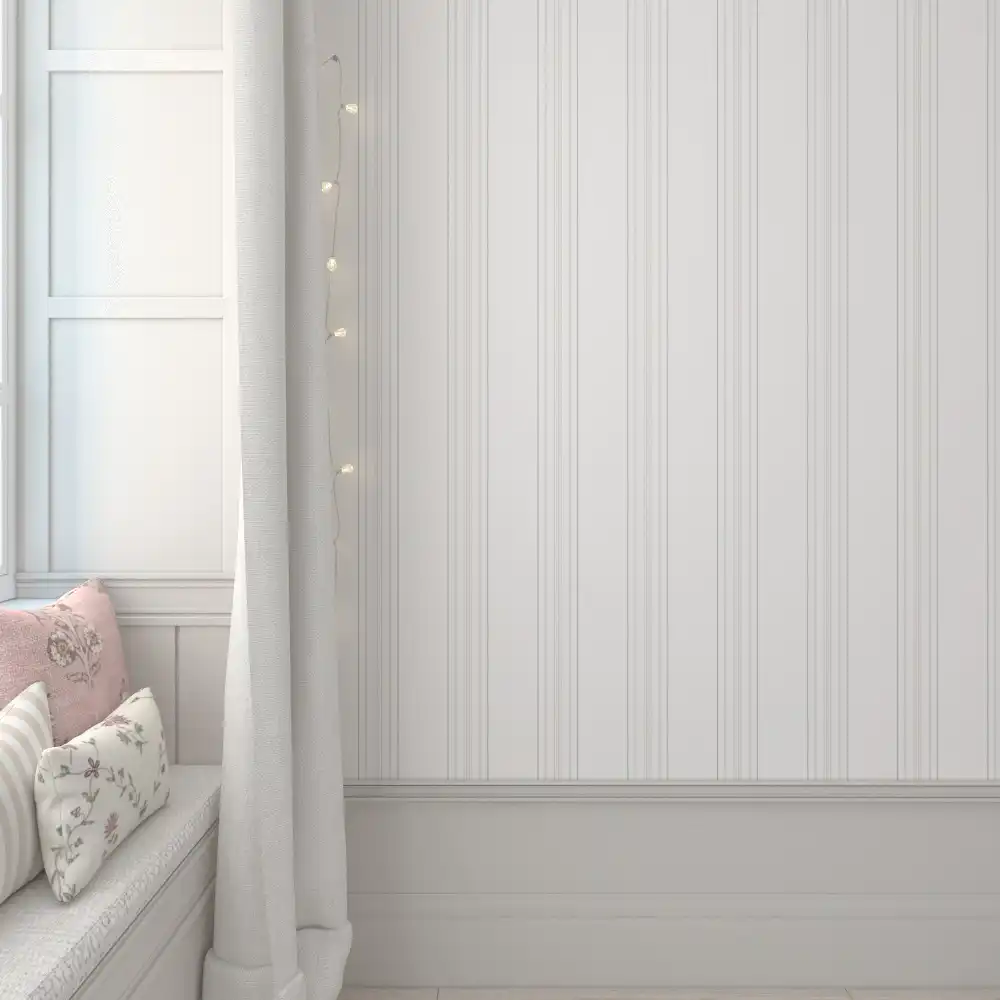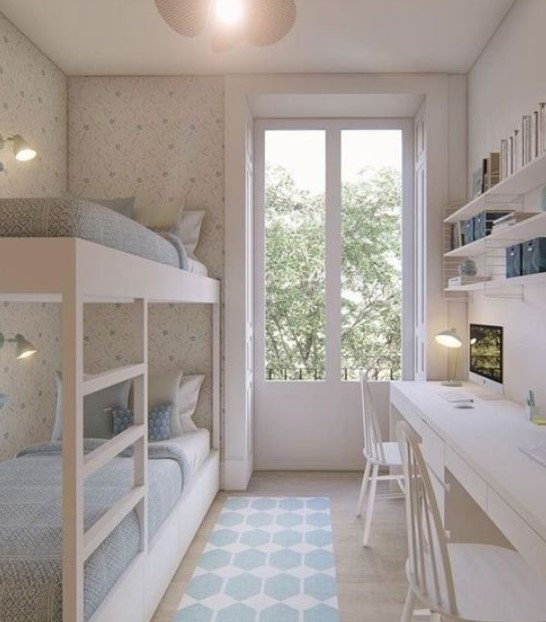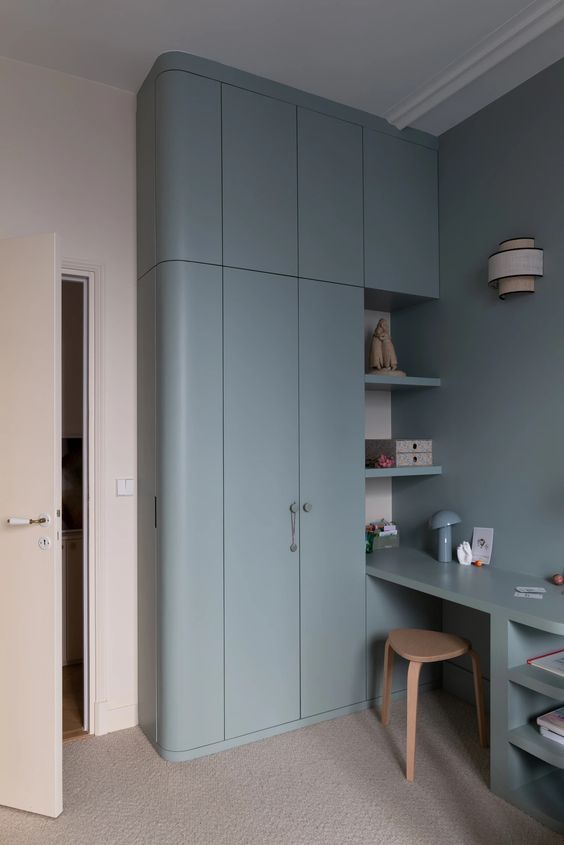Blog, A guide for you
How to optically enlarge a child's room? Tricks for a small children's room
Often children's rooms are very small or narrow. It's quite a challenge to organize a child's space there. All in all, just because a child is small doesn't mean he has few things. He even has a lot of them. The limited square footage combined with the plethora of toys, clothes and accessories of a toddler can give many a parent a headache. The key to success in arranging such a space is, first of all, good planning and the use of a few clever tricks.
Of course, with a few rules of decorating such a room, you can optically enlarge it and gain some space. The first rule of designing a small room is a good layout of the zones.
What zones can we separate in a small child's room?
In a small child's room, visually enlarging the space can significantly affect comfort and functionality. The key element is the sleep area, which should be designed with space-saving and comfort in mind.
The bed is the most important piece of furniture in a child's kingdom. It is where he or she recuperates after an eventful day. An ideal solution for siblings is a bunk bed, which allows you to create two comfortable places to sleep, taking up the space of only one bed. If the room belongs to one child, and you want to provide a place to sleep for guests, a pull-out bed is an excellent solution. During the day, the second bed is tucked away, making the child's room more spacious.
In a small child's room, it is also important to properly arrange the study area. This is where the toddler will develop his passions, gain knowledge and do homework. The heart of the learning zone is the desk. It should be large enough to accommodate all the necessary books, notebooks and supplies, while not cluttering the room. Models with drawers or shelves to help keep things in order will work great.

In a small room, carving out adequate space for entertaining can seem like a challenge, But with a little ingenuity, you can create a real paradise for the little explorer.
In a small room, every square meter of floor is valuable. That's why it's a good idea to separate a central play space, leaving the floor free in the middle of the room. This will give the child more space to scout and make the room seem more spacious.
Remember that zoning is really about making a small room serve us best and accommodate the child. Such a place serves us better and grows up with the toddler.
Now I will show you how what rules to follow for small children's interiors, but not only. These are very universal rules.
How to visually enlarge a child's room? Principles of visual enlargement
- Floor - It is best if the floor is fairly uniform. Probably the floor material and color will be the same as in other parts of the house. But in a child's room an additional carpet or mat is very important. The largest possible carpet in bright colors will work very well. In terms of design, it is best to use a minimalist version, that is, without patterns and in a solid color. It can be a hemmed, fluffy carpet in size.

2. Walls - Very good in such rooms are light walls in shades of soft gray, sand, or beige. In addition, I highly recommend you to use wallpaper in small rooms, which adds visually to the area. In this case, our striped wallpapers e.g. peony strips. Linear delicate wallpapers in muted colors also look good in small rooms. A good example is our peony wallpaper with a frill in blue and pink or forest motifs. Such a neutral version of wallpaper is also checks and dots. In the case of neutral colors, you may be missing childish accents. You can use our wall stickers and stick them on a section of the wall near the play area, or simply stick them on doors or furniture.
3. Furniture - For furniture, I would definitely bet on built-ins in the form of custom cabinets, necessarily under the ceiling. This is not only a treatment that enlarges a small room, but will also allow you to gain additional storage space. It's also better to avoid disjointed individual pieces of furniture, such as dressers, tables, cabinets, etc. It is much better to use solutions such as combining a space for toys with a countertop for creative works.
4. Fabrics -I'm curious if you ever wondered how big a role fabrics play in interiors? Often a child's room is about 8-12 m2, and the area of fabrics, such as curtains, drapes, bedspreads, bedding, decorative cushions and carpet is altogether much larger. This probably best illustrates just how crucial fabrics are. In small rooms I recommend you use very plain fabrics, but with beautiful textures. Quilts and decorative cushions can have delicate patterns in pastel colors.
5. Posters - A trilogy can be written about the failed wall galleries. And it's not that difficult. There is a sacred rule! Follow it! It is better to have one very large painting in a beautiful frame with passe part out than several smaller ones. Especially in small rooms this is very important. I invite you to our wall posters for children. We have a very large selection of them.
6. Colors - this rule basically applies to all the rules mentioned. Stick to max. 3 colors. Preferably light and pastel colors. It is a good idea to prepare yourself a selected color palette and when shopping, confirm to yourself whether the selected products fall within the selected color range. When you stick to these 6 rules, your child's room will be functional and much larger. A side effect will be that it will also be beautiful and timeless.

How to optically enlarge a room with wallpaper?
In a small children's room, properly selected wallpaper can work wonders, optically enlarging the space and adding character. What tricks are worth using?
- Bright colors are a must. White, cream, gray, soft blue - these colors reflect light, making the room appear brighter and more spacious.
- Stripes - vertical or horizontal? It depends on what effect you want to achieve. If you want a small children's room to seem taller, choose wallpaper with vertical stripes. Vertical lines will lead the eye upward, and the ceiling will seem higher. On the other hand, horizontal stripes will work better in narrow rooms, which will optically widen the room.
- Photo wallpaper with perspective, such as a landscape or city skyline, can create the illusion of depth and optically enlarge a child's room. Just remember to choose a wall mural with bright colors and a clear pattern.

How to optically enlarge a room with colors?
One of the most effective ways to optically enlarge a room is to unify the color scheme of the walls and floors. By choosing similar tones, you blur the boundaries between the walls and the floor, making the room appear larger. Opt for light shades of white, beige, gray or pastels, which will add spaciousness to the interior.
If you want to introduce stronger colors into a room with a small space, do it in moderation. Choose one or two accent walls on which to apply more intense colors, and paint the rest in a light shade. Such a contrast will not overwhelm the interior.
Painting the ceiling a lighter color than the walls is another clever way to optically enlarge the interior. The ceiling will then appear higher. It is also a good idea to leave a band of white color around the top edge of the walls, which will further enhance the effect.

